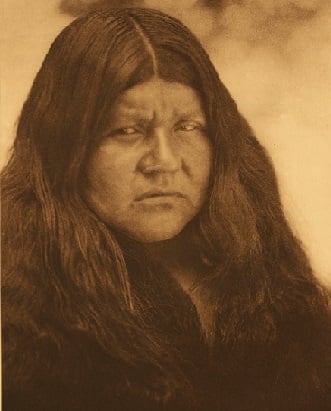
Wappo Indian Tribe Facts
The Native American Indians who once inhabited the Napa Valley region in Northern California is called the Wappo Indians. With 10,000 years of ancestry in the region, it is no wonder that the name Napa Valley, which means "land of plenty" comes from the Wappo language. When the tribe was at its peak there were upwards of 8,000 members. What was once a tribe known for being peaceful, brave, and hardworking is now almost completely wiped out. The following facts and information will help you understand why this tribe has such an interesting heritage.
Click here for a great selection of Wappo Indian books on AMAZON
Wappo Indian Interesting Facts
- The Wappo people lived in a warm climate and for most of the year, they did not wear clothing at all. On occasion, the women wore simple grass aprons. In colder temperatures, animal hide capes were worn by both men and women.
- The Wappo became known for the art of basket making. They used materials such as sedge, redbud, and willow to construct beautiful artistic baskets and baskets for specific purposes such as gathering food and even holding water.
- Staples in the diet of this hunting and gathering tribe included a lot of fish, berries, fowl, and wild animals such as deer, squirrels, and bears.
- Many types of marine food were often caught with their bare hands such as turtles and various types of fish.
- The Wappo were not picky eaters and ate the food available to them. This sometimes meant catching caterpillars, snails, and grasshoppers from the ground. When acorns were available, they would collect them, mash them up and eat them.
- Jewelry was often made from a combination of animal bones, sea shells, and beads. Magnetite cylinders and clamshell beads were used for both jewelry and currency.
- The Wappo took good care of their children; their motto is "Respect for elders, honor the children."
- Wappo villages usually had one or two sweat lodges. These were steam baths used by men for ceremonies. They were also gathering places for talking and praying.
Wappo Tribe History Facts
- In the 1800s, Mexican missionaries gave the tribe the name guapo, when Americanized, it became Wappo, which means brave.
- The Wappo put up a valiant fight against the Mexicans, who hoped to colonize the area, but were ultimately unsuccessful in retaining the way of life they had known for generations.
- In 1836, Satiyomi, a Wappo leader, signed a peace treaty with the Mexicans after a year of fighting to defend the Wappos homeland.
- Continual relocation and forced marches by the U.S. government in addition to diseases such as smallpox took a huge toll on the Wappo population.
- Many Wappo eventually mixed and intermarried with other local tribes and even Europeans.
Wappo Indian Shelter Facts
- The Wappo built different styles of houses for different seasons.
- Wickiups were preferred in the warm summer months. These were rounded structures made of tree branches with frames covered with grass. In the winter months, a similar structure was built but mud was used to trap in heat.
- When the houses became run-down or too dirty to inhabit, they were burned down and new houses were built.